esa
Latest

Personal electric plane won't need an airport
Now that hoverboards are an honest-to-god thing, we have to say we're pretty disappointed with how flying cars have worked out. Another company has jumped into the fray with a vertical take-off plane called the Lilium that can soar at 400 km/h (250 mph). We'd normally say they're dreaming with the specs: A 10,000 foot ceiling, 500 km (310 mile) range and helicopter-like takeoffs, all on battery power. However, it's hosted by a European Space Agency (ESA) incubator and the team from the Technical University of Munich plans manned tests next year.

Europe and Russia move their ExoMars mission launch to 2020
While the first part of Europe's and Russia's ExoMars mission took off on time in March, the second phase has been delayed. They've decided to launch their Martian rover, which will be capable of drilling up to two meters (6.5 feet) below the surface, in 2020 instead of 2018 like they previously planned. According to the BBC, Roscosmos' engineers have been having a hard time designing rover's landing mechanism. At the same time, European Space Agency's engineers are also having trouble putting together all the components and instruments ExoMars' second phase needs.
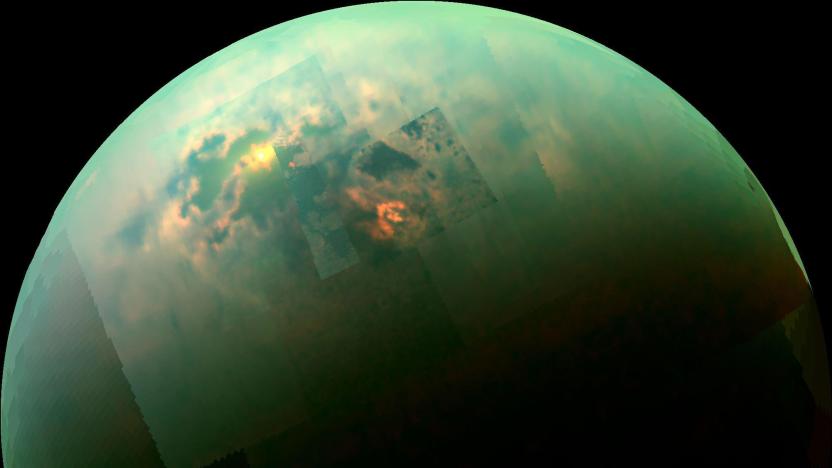
Cassini flybys probe the depths of Titan's methane sea
As Cassini makes the final rounds of Saturn on its roughly 20-year mission, the spacecraft has maneuvered into position over Titan to explore Ligeia Mare, the second-largest methane sea on the planet's largest moon.

ICYMI: Moon waystation, human skin like bananas and more
#fivemin-widget-blogsmith-image-92297{display:none;} .cke_show_borders #fivemin-widget-blogsmith-image-92297, #postcontentcontainer #fivemin-widget-blogsmith-image-92297{width:570px;display:block;} try{document.getElementById("fivemin-widget-blogsmith-image-92297").style.display="none";}catch(e){} Today on In Case You Missed It: The European Space Agency wants to put a permanent base on the moon, for all agencies to share. A new solar plant in Nevada is the first to store 10 hours of energy in salt, continuing to produce electricity overnight. And researchers are studying bananas because an enzyme in their skin is just like one produced by human skin. Maybe that's why they taste so good? JK, that was just for Hannibal Lecter. We also wanted to bring you this latest Guinness World Record, of an electrified skateboard traveling at 59.5 miles per hour. As always, please share any interesting science or tech videos, anytime! Just tweet us with the #ICYMI hashtag to @mskerryd.

NASA finds 'super-Earth' with an atmosphere it can analyse
Astronomers at NASA, working with the ESA and the University College London, announced Tuesday that they have discovered a "super-Earth" exoplanet with an atmosphere, that, for the first time, they can analyse. The Hubble telescope's Wide Field Camera 3 (WFC3) first spotted the planet, dubbed 55 Cancri e, which is only about 40 light years away. Super-earths are simply rocky planets that are bigger than the Earth -- in this case, eight times bigger. They're widely believed to be the most common type of rocky planet in the galaxy.
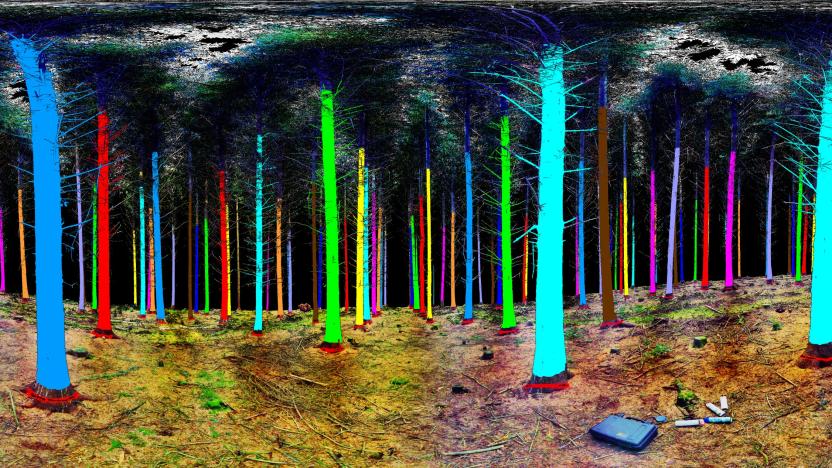
The environmentally friendly rainbow laser forest
Lasers might not be the first things that come to mind when thinking of the conserving the environment. Nonetheless, they're being used to manage commercial forests more efficiently. The false-color image above was captured with a "laser radar" LIDAR (light detection and ranging) system from Irish company Treemetrics. The colors are a 2D representation of 3D data that reveals how dense and straight the trees are. This allows plantation managers to understand how many logs can be harvested from any given tree, and what their quality will be.
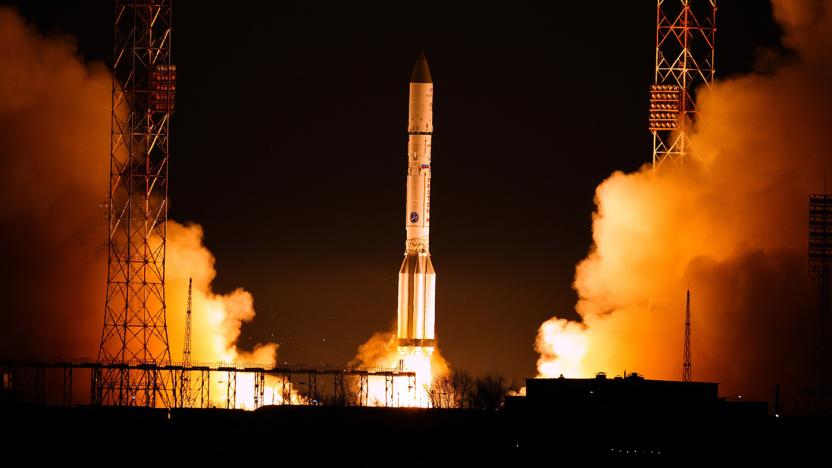
European SpaceDataHighway's first satellite lifts off
The ESA's and Airbus Defence and Space's ambitious European Data Relay System (EDRS) project has reached a milestone this January 29th. Its first laser-satellite system has blasted off to space aboard a Proton rocket from Kazakhstan. The satellite is now heading towards its geostationary position above Europe, where it will follow the Earth's direction as it rotates. The EDRS project, which is also called "SpaceDataHighway," aims to launch a constellation of geostationary satellites that can receive and transmit data in near-real time.

Here's how you make coffee in the International Space Station
Now that the International Space Station is in bloom, how about a nice cup o' joe to enjoy alongside the (single piece of) greenery? European Space Agency astronaut Tim Peake pulls out a coffee with cream vacuum pack (with the delicious sounding sugar substitute), and inserts it into the most high-tech kettle we've ever seen. This injects hot water into the pack, and one plastic straw later you're drinking space coffee. Which is obviously the best kind of coffee. It seems astronauts are still waiting on that space-ready espresso machine from Lavazza.
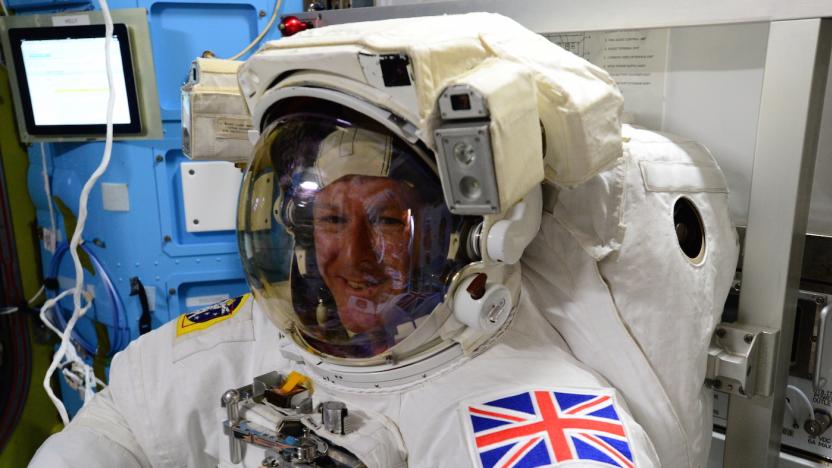
Watch Tim Peake become the first Briton to spacewalk
At 12:55pm GMT (7:55am ET, or 4:55am PT) British astronaut Tim Peake will step outside the International Space Station (ISS) for the first time. He'll be accompanied by NASA astronaut Tim Kopra and together they'll perform some crucial repair work. The pair's main task is to replace a broken Sequential Shunt Unit (SSU) which transfers power generated by the Station's solar arrays. As the European Space Agency explains, the job needs to be completed within 30 minutes while the ISS passes through the Earth's shadow, as this mitigates the risk of high-voltage sparks.

Philae comet lander has likely gone silent for good
If you were hoping for a happy ending to the Philae comet lander's frequently perilous adventures, you might be disappointed. The German Aerospace Center reports that a last-ditch attempt at contacting the lander has so far gone without a response. Either it doesn't have enough power to follow through, or it didn't get the commands in the first place. There will still be "contact opportunities" until January 21st (when the Rosetta spacecraft flies to the comet's southern hemisphere), the Center says, but it's not expecting to hear back.

The ESA wants to put people on the moon by the 2020s
The European Space Agency is going back to the moon. It announced on Friday that it's working with international partners to land a series of manned missions on the moon by the end of the next decade. But first, they're sending in robots to pave the way.

ESA makes an easy-to-view archive of new Rosetta comet images
The Rosetta probe has finally beamed back the photos (among other data) it took of 67P/Churyumov–Gerasimenko, as it flew within just 19 miles of the comet's surface. They were captured by the probe's main imaging system called OSIRIS, which is comprised of one narrow-angle and one wide-angle camera, from June 20th to September 16th, 2014. The spacecraft has gone closer to the comet since then, but the photos illustrate what the probe was seeing as it approached the celestial body.

Watch the first British astronaut in over 20 years blast off for the ISS
One in, one out. Or to be more specific, three in and three out. A trio of astronauts descended from the International Space Station (ISS) on Friday, making way for a new group of space-smitten explorers. Among the group blasting off today is Tim Peake, the first British astronaut to visit the ISS and the first UK astronaut to explore space in over 20 years. He'll be joined by NASA astronaut Tim Kopra and experienced cosmonaut Yuri Malenchenko, who in 2003 became the first person to marry in space.

Watch the European Space Agency launch LISA Pathfinder
Albert Einstein predicted gravitational waves as a part of his Theory of Relativity, and in order to better understand them, the ESA is about to launch its Lisa Pathfinder mission. This is a small-scale test run for the actual measuring equipment slated to launch in 2034, intended to prove that its instruments can reach the required level of precision. The launch will take place shortly from the Kourou spaceport in French Guiana, and you can watch the video live streamed right here.
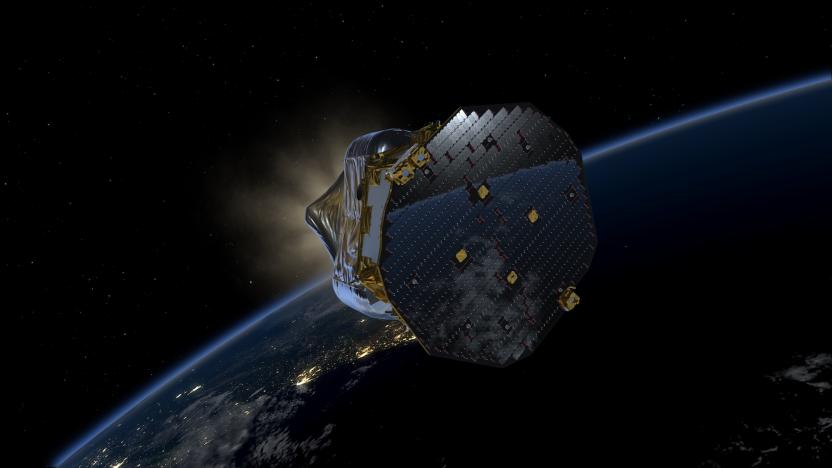
Watch ESA explain how it plans to find gravitational waves
In just under a week the European Space Agency (ESA) will launch its LISA Pathfinder spacecraft on a Vega rocket. Buried within the vessel are two cubes made of gold-platinum which, scientists hope, can lay the groundwork for measuring gravitational waves in space. The theories and testing procedures can be tricky to wrap your head around, but thankfully the ESA has made some explainer videos (below) to help you out.

Researchers use satellite launch blunder to test relativity
Pop quiz, hotshot. You've just launched a pair of GPS satellites into the wrong orbit, rendering them useless for navigation. What do you do? If you're the European Space Agency (ESA), you re-purpose them to precisely test Albert Einstein's theory that clocks slow down near heavy objects. Since the Galileo satellites were placed in elliptical, rather than circular orbits by Russian Soyuz rockets, they pass closer to Earth at certain points. Our planet bends the fabric of space-time, so the super-precise atomic clocks on-board the satnavs will theoretically slow during those times, then speed up again when the craft move away.

Astronomers find pure oxygen leaking from Rosetta's comet
European Space Agency astronomers, with the help of the Rosetta spacecraft, have made a remarkable discovery that could fundamentally alter our understanding of how the solar system formed. They have detected large amounts of pure oxygen (O2) leaking from comet 67P/Churyumov-Gerasimenko. Oxygen is a pretty common element, but because it reacts so easily with other elements it's almost always found in mixed molecules like carbon monoxide (CO), carbon dioxide (CO2) or water (H2O).

Our ongoing missions to Mars are over 50 years in the making
A deep space mission to Mars will require more than a few bottles of Poland Spring and water reclamation is a complicated business. Luckily, recent research is showing that liquid water may be more prevalent on the red planet than previously thought. Gathering the data that led to this discovery (amongst many others) didn't just happen overnight. It's the result of over 50 years' worth of missions from Earth with sights set on Mars, not all of which were successful. We've collected some highlights from humankind's long history of hurling spacecraft toward the fourth planet from the sun, and the good news is: We're getting better at it.

Las Vegas bets that SpaceX will make it to Mars before NASA
NASA may believe that it'll be the first to land humans on Mars, but don't tell that to Las Vegas betting houses. Popular Mechanics has asked Docsports' Raphael Esparza to set odds for the first organization to put people on Mars, and he believes that SpaceX stands a much better chance of reaching the Red Planet (5 to 1) than anyone else, including NASA (80 to 1). To put it bluntly, SpaceX has the money and the motivation that others don't -- NASA would be the favorite, but its budget cuts are holding it back.

The dark side of Rosetta's comet is icier than expected
The comet that the European Space Agency's Rosetta spacecraft has been chasing around the sun has a dark side. No, 67P isn't hiding any terrible secrets -- the southern hemisphere literally faces away from the sun during most of its 6.5-year-long solar orbit. Until recently, none of the cameras aboard Rosetta have been able to image it due to that utter lack of light, except for one -- the MIRO microwave instrument. NASA scientists behind the device have released a report on their observations, and lead author Mathieu Choukroun said "these unique data are telling us something very intriguing about the material just below its surface."









